Mike Harrison led a fungus identification walk at Padworth Common on the morning of Saturday 18 November. The Common is managed by BBOWT, the local Wildlife Trust. Previous forecasts had been pessimistic about the amount of rain which was expected, but apart from a little light drizzle, the morning was mostly dry and surprisingly mild. The ground was saturated from much rain in the preceding week. Mike had brought along a Sessile Earth-star to show people, found in Sherborne St John earlier in the week. The walk started out along the main ride which runs westwards from the car park and is lined on each side by a row of smallish oak trees. Burgundydrop Bonnet Mycena haematopus under oak was the first find of the morning. The stem exudes a dark blood-red juice when broken. Tiny white kidney-shaped specimens of Crepidotus, probably C. cesatii, were found on a small branch. Butter Cap Rhodocollybia butyracea was one of the most abundant species seen on the walk, with the first specimens seen under the reserve sign near the car park. A Common Earthball Scleroderma citrinum was past its best. A pink Rosy Bonnet Mycena rosea was another distinctive sighting, as was a blue-tinged Wood Blewit Lepista nuda. Clouded Agaric Clitocybe nebularis was another frequently seen species. Both Deceiver Laccaria laccata and Amethyst Deceiver L. amethystina were found down in the leaf litter. Ochre Brittlegill Russula ochroleuca, could be easily identified by the distinctive dull yellow colour of its cap and greying of the stem. An Oakbug Milkcap Lactarius quietus had a concentrically zoned cap with a dip at the centre and was growing under oak. It is reputed to smell of bed-bugs – nobody knew exactly what that meant, although it did have a distinctive smell. Common Puffballs Lycoperdon perlatum were found under pine. A successful hunt under the nearby Bracken came up with a tiny fungus growing out of a pine cone, a Conifer Conecap Baeospora myosura. A brown-gilled fungus growing on moss belonged to the Cortinarius family, but Mike said that it would be difficult to identify and would probably need DNA sequencing to narrow it down to a particular species. The small bracket Crimped Gill Plicatura crispa on the end of a log had wrinkles, not gills or pores, on the underside. It is a relative newcomer to southern England, having arrived in the last 30 years. Several Fly Agarics Amanita muscaria were growing under Birch. Yellow Stagshorn Calocera viscosa and Candlesnuff Xylaria hypoxylon were recognised by most of the participants. A specimen of Artist’s Bracket Ganoderma applanatum was spotted. It is home to the galls of the Yellow Flat-footed Fly. A Birch Polypore Piptoporus betulinus was another familiar species. A troop of White Saddle Helvella Crispa was growing next to the path. A large fallen branch was home to a big colony of Hairy Curtain Crust Stereum hirsutum. Its colour ranged from orange to dark red, with the older specimens being darker. The hairs which give it its name were easily visible with a hand lens. Ugly Milkcap Lactarius turpis was found on the edge of the heathland on the north side of the track. It was large and chunky and a dirty green in colour. Mike tested the milk, which was initially mild, but soon turned acrid. A specimen of False Death Cap Amanita citrina was found. It had a ring near the top of the stem and the bulb at the bottom was larger than the cap. Another Milkcap was found under birch. If it was Birch Milkcap Lactarius tabidus, then a drop of its milk on a white tissue would turn yellow after about 10 minutes. It was tested, but did not turn yellow. The walk continued through an open section of heathland on the south side of the main ride. A lump of Yellow Brain Tremella mesenterica was found on a fallen branch. A Beefsteak Fungus Fistulina hepatica was growing on the trunk of a solitary oak. There were still a few flowers of Cross-leaved Heath to be seen. A stout specimen of Brown Rollrim Paxillus involutus was growing amongst the heather and moss. Sulphur Knight Tricholoma sulphureum was another robust fungus with a strong smell of tar or coal gas. Common Rustgill Gymnopilus penetrans was found on a rotting conifer log. It was orange with a ring and had brown speckling on its gills. To the left of the track was an area which had been dug out below the level of the Common, perhaps a relic of the time when gravel was extracted there. On the bare earth at the top of the steep slope down into the excavated area were two small brown patches of Earthfan Thelephora terrestris. Mike collected rabbit droppings from the bare soil of a bonfire site within the excavated area. These would be kept moist and not too cold, and it would be interesting to see what emerges. Mike assured his audience that he only uses this technique for herbivore droppings. Heading back towards the main ride, a patch of Chanterelles Cantharellus cibarius were found under oak. Nearby was a forest of needle-like small cream-coloured club fungi poking up through the leaf litter, Macrotyphula juncea. Turning round and heading back towards the start, a fungus with a greasy cap under oak was one of the Poisonpies Hebeloma. An orange fungus with decurrent gill-like folds under pine was False Chanterelle Hygrophoropsis aurantiaca. A habitat pile on the open heathland to the north of the main track had an interesting collection of fungi. The sawn-off end of a birch log had an assemblage of different coloured fungi, including the grey Smoky Bracket Bjkerandera adusta, the purple Chondrostereum purpureum and there was also Splitgill Schizophyllum commune nearby. A tiny False Ladybird Endomychus coccineus was spotted on the log. Bleeding Conifercrust Stereum sanguinolentum was found on a pine log. Yellow-leg Bonnet Mycena epipterygia, with a sticky yellow-green stem and a sticky cap was growing on a bonfire site. Finally, Mike found a striking fungus under a Gorse bush by the path, which had a sticky cap and yellow decurrent gills. It bruised red and several older specimens were found nearby with reddish orange flesh under a brown cap. They were identified as Herald of Winter Hygrophorus hypothejus. There had been signs of fungus collection during the walk. The reserve sign was examined carefully at the end of the walk. It did not appear to say anything about not collecting on the Common – perhaps it should.
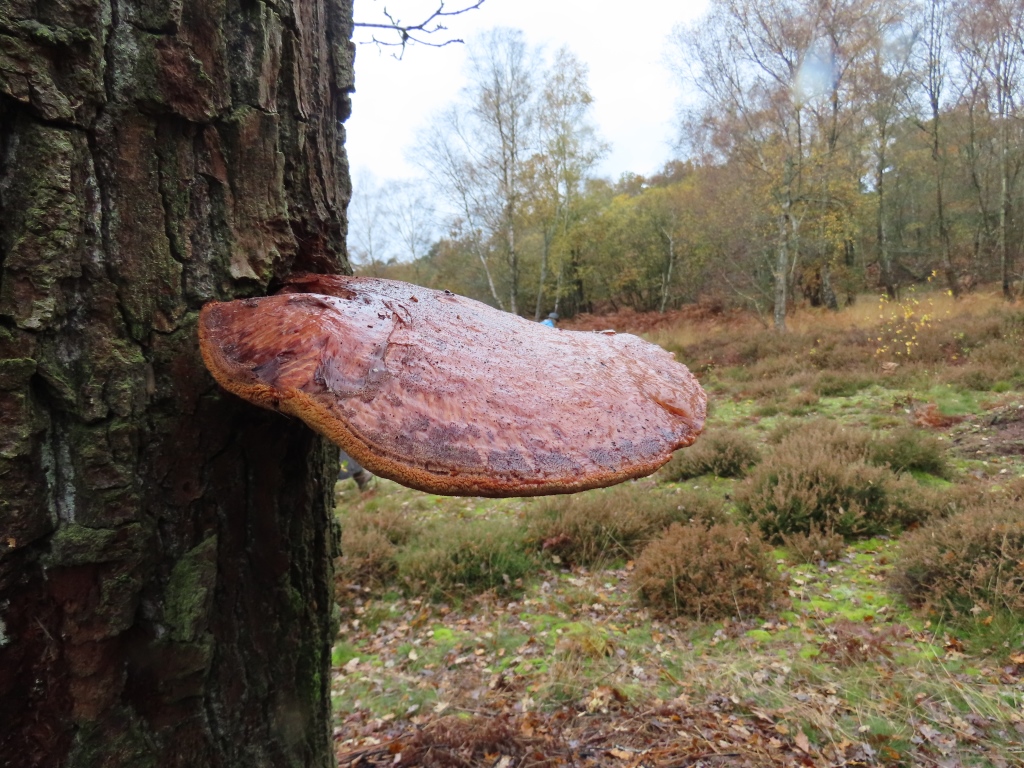
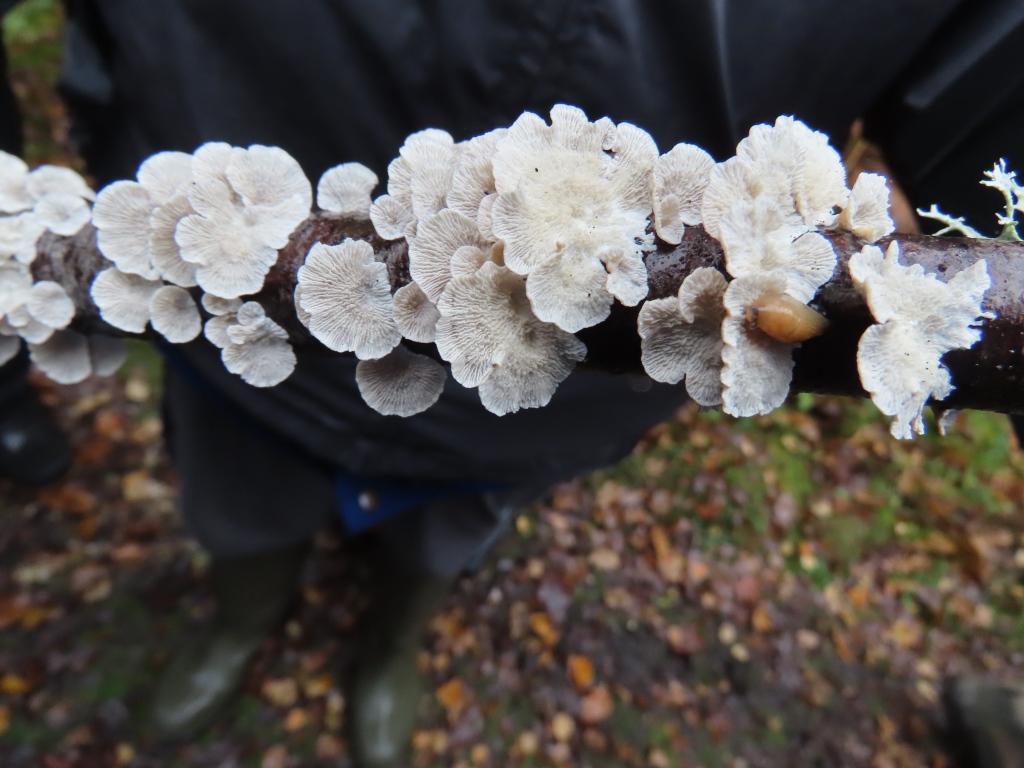
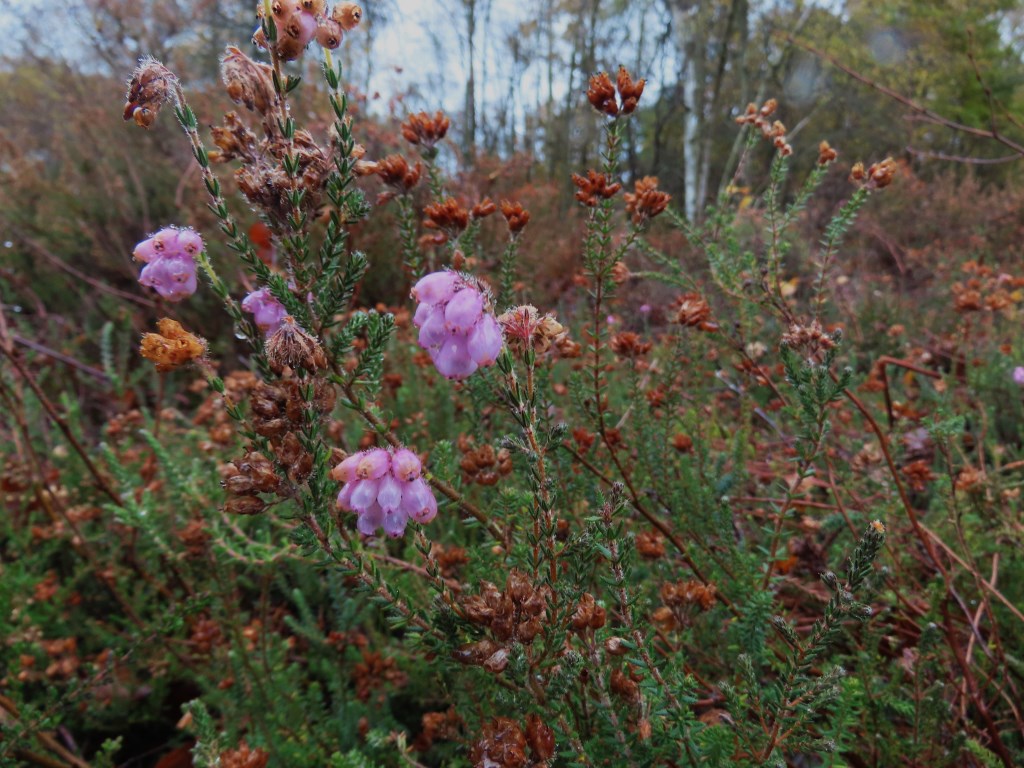
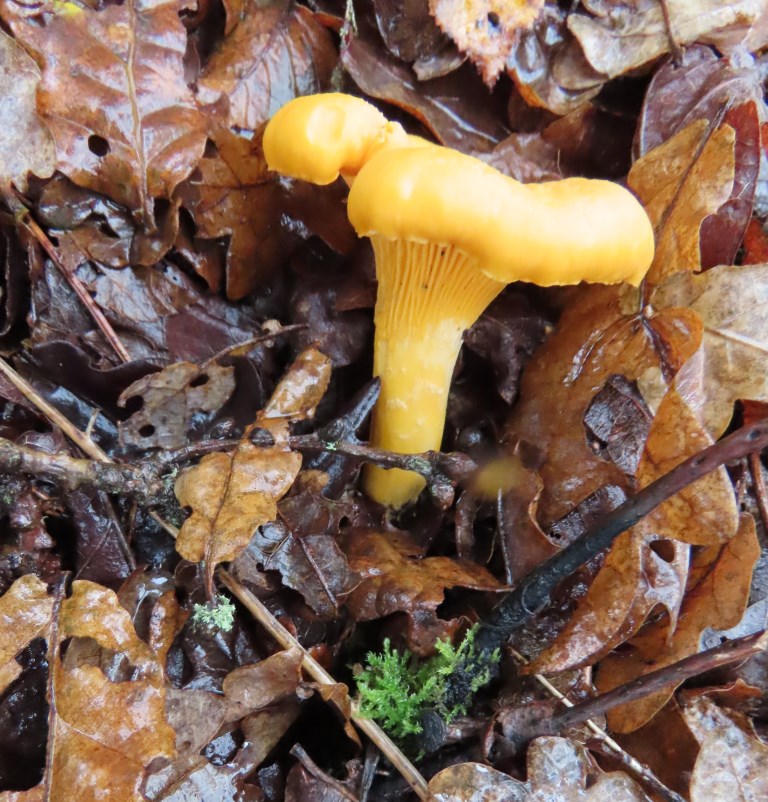
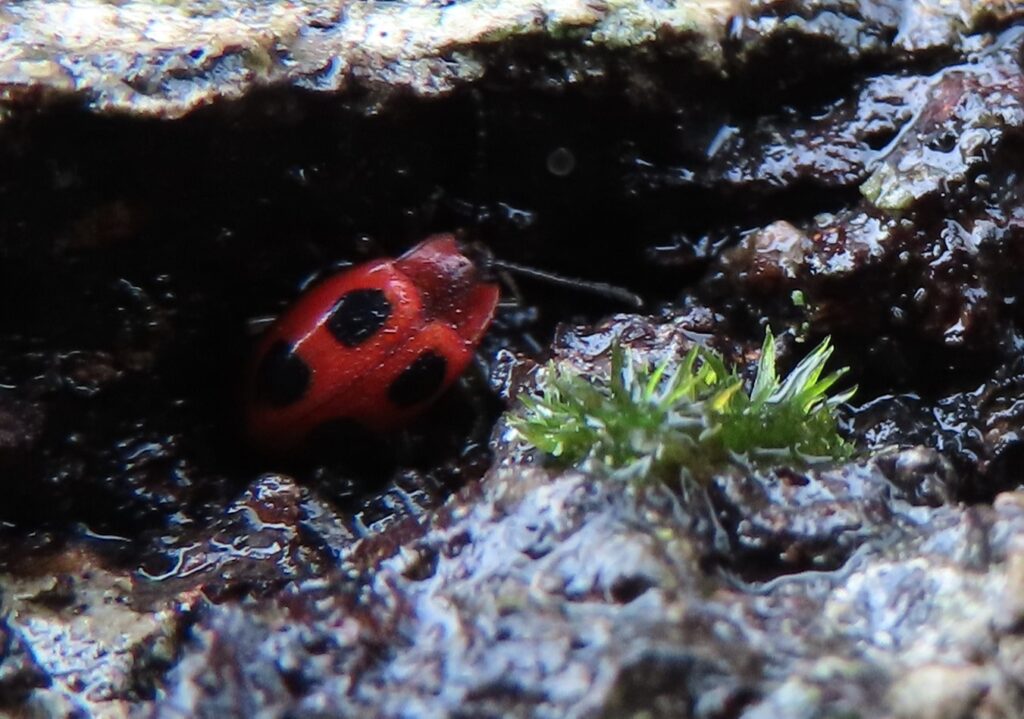

Pictures by Fiona Brown
